This was published 6 months ago
Spawned from inner-city muck, this suburb full of lawyers is getting younger
By Angus Delaney and Josh Gordon
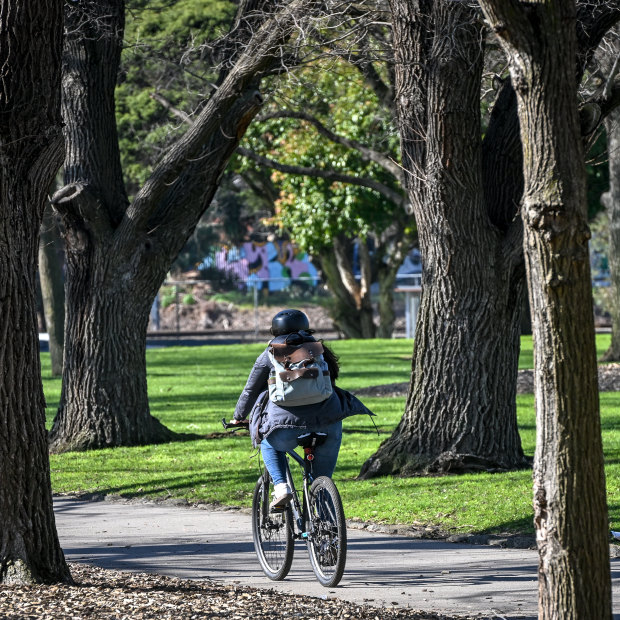
A cyclist rides through Darling Gardens in Clifton Hill.Credit: Justin McManus
Nigel Davies knows Clifton Hill is a suburb caught between the past and present.
The managing director of Melbourne’s oldest surviving funeral parlour looks on as young families join the suburb’s long-term, older residents.
“In the last 10 years, virtually every weekend, there’s been a sale in the blocks behind Queens Parade, and a couple of weeks later there’ll be an old ’70s or early ’80s kitchen out on the front lawn,” says Davies.
“Because the old ladies have all had to go into care or have died, and you get the new families coming in, refurbishing their houses.”
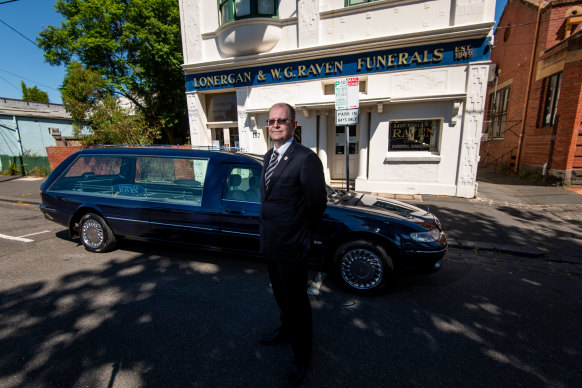
Nigel Davies, managing director of Melbourne’s oldest surviving funeral parlour, outside the historic building on Queens Parade in 2022. Credit: Justin McManus
The confluence of the old and young in Clifton Hill has impacted the local housing stock, with new, medium-density apartments sharing the street with historic terrace homes. The stark reality of the suburb’s two main constituencies is clear on Gold Street – opposite the local primary school is an aged care home.
Remy Van de Wiel, a retired King’s Counsel, has lived in Clifton Hill for more than 50 years and has witnessed the influx of young professionals.
“Architects came, lawyers came, politicians came,” says Van de Wiel.
“We now have, I think, an enormous population of lawyers and judges.”
The data backs Van de Wiel. According to the 2021 census, there are more solicitors in Clifton Hill than any other profession (108 to be precise).
Locals jokingly refer to the suburb as “the People’s Republic of Clifton Hill”. There’s a tinge of irony about that. It’s left-leaning, but its residents are also typically both well-educated and well-remunerated.
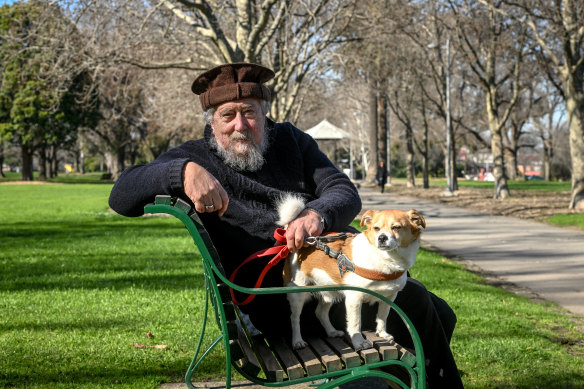
Remy Van de Wiel has lived in Clifton Hill for more than 50 years.Credit: Justin McManus
The median weekly household income in the suburb is $2755, far higher than the Victorian average of $1759. About 63 per cent of Clifton Hill residents have at least a bachelor’s degree, more than double the state average of 29.2 per cent.
Before it made its mark as an enclave for the well-off and well-educated, Van de Wiel says Clifton Hill housed “largely immigrants, [the] working class with some tradies”.
Davies, who’s presided over thousands of funerals in the area, also remembers the colourful characters of the area’s past.
He held the service for Chopper Read’s funeral, which was originally going to be held in Lonergan and Raven’s chapel on Queens Parade, but had to be moved to a larger venue due to huge media interest in the notorious criminal.
“A couple of weeks later, I did the funeral for a Supreme Court judge and the family were amused to point out that this judge had actually put Chopper away a couple of times,” says Davies.
“But Clifton Hill being the sort of area it was, their houses were actually only about half a block apart.
“Their wives have seen each other in coffee shops on a regular basis.”
Clifton Hill personifies Melbourne’s coveted liveability. It has easy access to just about everything: public transport, bike lanes, hipster cafes and bars and the bushy tranquillity of Merri Creek and the Yarra.
There is a public primary school at each end: the more freewheeling Spensley Street on the eastern side and the more traditional Clifton Hill Primary, on Gold Street, to the west.
The suburb remains one of contrasts, with low-rise public housing strung along its southern flank, some crusty blocks of flats from the 1950s and 1960s, plenty of smaller cottages mostly built during the boom years of the 1880s, as well as some grand old houses, particularly around Darling Gardens.
To understand its origins, you need to rewind to the mid-1850s, when the area was still relatively sparsely populated Crown land, dotted with a few freehold properties.
Clifton Hill was spawned out of the muck of the Collingwood river flats, which by the middle of the 19th century had degenerated into a planning and public-health disaster.
Mortality rates around the river flats had soared as diseases such as dysentery, typhus, scarlet fever, diphtheria and smallpox flourished.
As an 1881 editorial in The Argus described the situation: “Almost every street lying upon the Flat has its green and stagnant gutter, or its foetid pool, while the backyards of many of the dairymen, car-proprietors, and others, unprovided with any kind of drainage, teem with decomposed matter …”
Victoria’s Central Board of Health – set up by the government of the day to provide public-health advice – blamed the crisis on “miasma theory”, the misguided notion that disease was spread by foul vapours or bad air.
In 1855, a group of Collingwood businessmen, anxious to improve the local area with better streets, buildings and public spaces, successfully annexed a chunk of Crown Land to the north that was initially simply known as North Collingwood, but would later become Clifton Hill.
It was to be an exercise in restrained urban planning, with wide, professionally laid out streets and plenty of open space.
The Collingwood annexation was not popular with the locals. As Henry Groom, a City of Melbourne councillor, put it at the time, “the freeholders of Clifton Hill have no desire to depreciate the value of their property by suffering it to be annexed to a swamp which to drain itself would drain our resources”.
There is some debate about how the suburb got its name. It has variously been suggested it was named after a local property, “Clifton Farm”, a town in England of the same near Bristol, or perhaps a villa known as “Clifton Grange”, located at Studley Park.
The word “Hill” was inserted by a local land developer John Knipe as a sort of marketing tool.
The suburb is indeed partly located on a small hill, rising towards what is now Quarries Park.
But more importantly, in the days of miasma theory, an elevated, well-drained, breezy location was seen as particularly desirable for a prospective buyer, in contrast to the unhealthy, poorly drained and foetid Collingwood river flats.
Karen Cummings, from the Collingwood Historical Society, says the western half of Clifton Hill was laid out by the Victorian assistant commissioner of Crown Lands and Survey, Clement Hodgkinson, in the 1860s.
“Most of the eastern part of Clifton Hill was done also in a rather piecemeal fashion, by individual land developers, but it is certainly less chaotic than most of Collingwood and Abbotsford,” Cummings says.
While the area was mostly residential, Cummings says, there was also industry in the area (including a number of boot-making factories). Both Merri Creek and the Yarra, along with a drain running down what is now Alexandra Parade, offered opportunities for industrial drainage.
A prominent landmark from Clifton Hill’s industry past is the shot tower on Alexandra Parade, a 78-metre building resembling a chimney built to manufacture lead shot. It held the title of Australia’s tallest structure from its construction in 1882 until 1930.
As a place to live, the area has fallen in and out of favour over the years, but it has retained a strong local identity, being buttressed by Alexandra Parade and the Eastern Freeway to the south, Queens Parade and Heidelberg Road to the north and Merri Creek to the east.
Gabrielle di Vietri, the Greens state MP for the seat of Richmond (which includes Clifton Hill) and a former City of Yarra mayor, says there is a stark difference in feeling when you cross from Collingwood to Clifton Hill.
“It is a ridiculously liveable suburb,” di Vietri says. “It is such a beautiful place to spend time in that is obviously very well planned. Darling Gardens has pride of place.”
But di Vietri says the area is not without its issues, including a lack of investment in public housing, as well as the cost of housing more broadly.
In the lead-up to the 2022 state election, di Vietri highlighted the shocking state of the housing estates in the area.
Emeritus professor of history at Monash University Graeme Davison says the northern extension of Collingwood provided the area with “a very different kind of clientele”.
“It has a sense of enclosure,” Davison says. “It has its own internal character. It is a pretty intact 19th-century streetscape.”
The sense of enclosure remains to this day.
George Tsagouris, owner of The Dirty Apron cafe, has become a stalwart of the suburb since setting up his business in 2017, knowing many of his customers by name.
He says locals are “very community first people”, and that Clifton Hill is “a quiet suburb”.
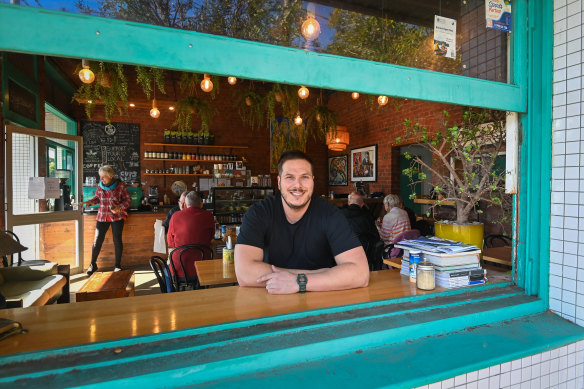
George Tsagouris’ Dirty Apron cafe has become a local favourite. Credit: Justin McManus
“It’s a stone’s throw away from the hustle and bustle of Richmond and Fitzroy and Northcote,” says Tsagouris.
“It’s five minutes from everywhere, but [residents] still live in a quiet spot.”
It’s one reason Sarah Langlet left Fitzroy last year, moving her young family to neighbouring Clifton Hill.
“We came here because it was still close to everything that we loved, but we have a bit more space of three bedrooms and there’s a backyard,” says Langlet.
Despite its proximity to Fitzroy, Langlet says Clifton Hill feels distinctly different.
“It has quite a lot more older people and more families.”
“It does have a bit of a community vibe, I think everyone seems really friendly.”
Although she doesn’t think she’ll stay in the area very long, the green spaces, public transport and sense of community provide “everything you could need”.
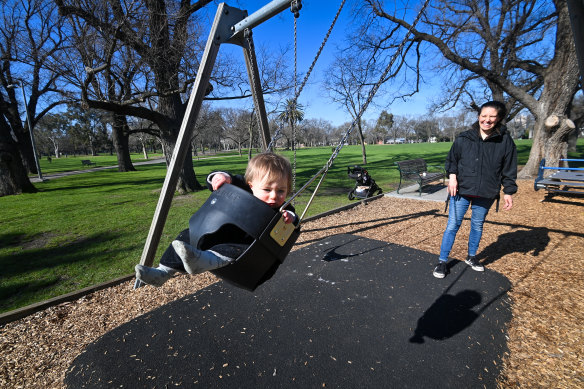
Sarah Langlet moved to Clifton Hill with her young family from Fitzroy. Credit: Justin McManus
Langlet is part of the changing demographic of Clifton Hill. And as the demographic changes so too has the need for more housing. Earlier this year, the Victorian government announced housing targets for all Melbourne council areas, earmarking the City of Yarra for an additional 48,000 houses by 2051, nearly double the 52,600 homes already there.
Development is a delicate topic in Clifton Hill, with long-time locals wary of tarnishing the area’s historic charm.
“It’s fair enough that if you live in the inner city, that there will be a greater level of intense development there,” says Van de Wiel.
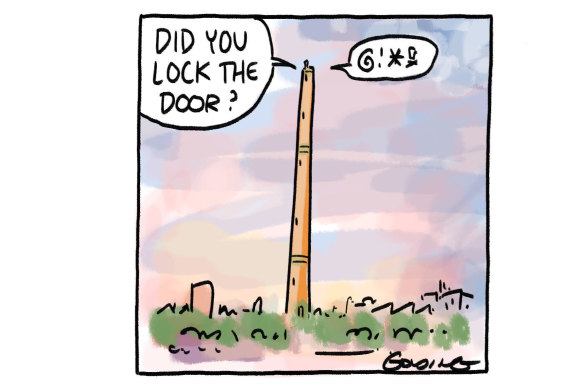
Credit: Matt Golding
“But it could be done with a greater sense of appropriateness.
“[On] some of those streets now, there’s just massive developments of high-rises that are quite ugly, and they don’t fit.”
Roy Tonkin, former executive director of Heritage Victoria, bought a house in Clifton Hill in 1976, and has lived there ever since.
Tonkin says he’s “happy to accept more development”, and cites recent medium-density development of the industrial and warehousing sites to the southern end of the suburb as a success.
However, Tonkin has successfully fought against development, opposing the redevelopment of the Royal Hotel in Clifton Hill, whose owners submitted a plan in 2019 to turn the historic building into a five-storey block of flats.
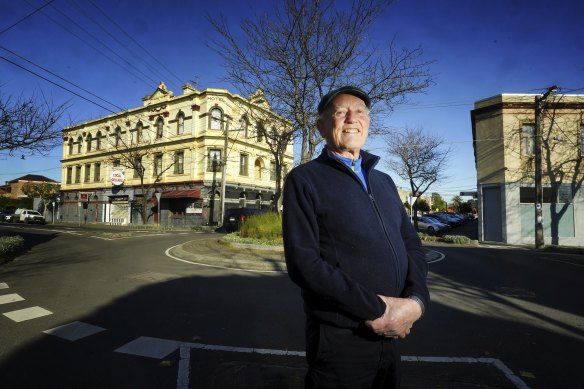
Roy Tonkin successfully campaigned against the redevelopment on Clifton Hill’s Royal Hotel.Credit: Luis Enrique Ascui
“The real concern was we were going to lose an iconic building, the biggest iconic building in Clifton Hill, and have it replaced with essentially a new development, which would have given us, I think in the end, no more than 15 housing units.”
These issues are not unique to Clifton Hill, with many inner-city suburbs preparing for uncertain futures and booming populations.
For all the changes set to hit Clifton Hill, many loyal residents will remain put, at home among all the comforts of the area. Why has Tonkin never moved after nearly 50 years living in the suburb?
“Why would we?” he says simply.
Get the day’s breaking news, entertainment ideas and a long read to enjoy. Sign up to receive our Evening Edition newsletter here.